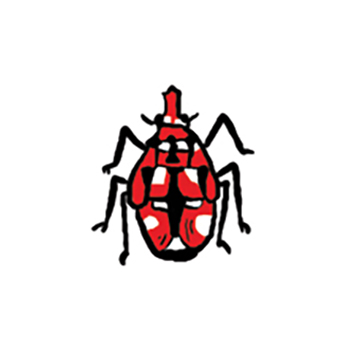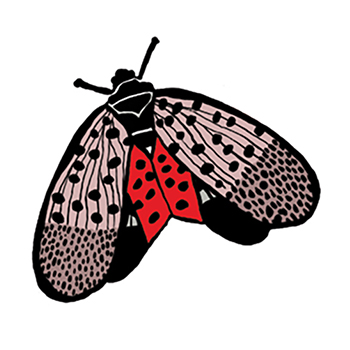The Spotted Lanternfly, an invasive pest, could cause economic impacts if allowed to spread. It has been found in southeast Pennsylvania and has started to spread and threaten nearby states. Lumber, grapes and hops industries are particularly at risk because spotted lanternfly likes to feed on these plants. This pest spreads easily by hitchhiking on vehicles or laying its eggs on most any flat surface – like the sides of box cars, propane tanks and equipment stored outside. Here’s how you can help…
Choose Where to Begin:
Spotted lanternfly (SLF), Lycorma delicatula, is an invasive planthopper that was first detected in North America in 2014 in southeastern Pennsylvania. It is native to parts of Asia. As of April 2021, SLF is found in Pennsylvania, New Jersey, New York, Connecticut, Virginia, West Virginia, Maryland, Delaware, and Ohio. SLF has also been detected in Massachusetts, Maine, Michigan, Oregon, California, and North Carolina, although established populations are not known to exist in these states.

SLF feeds voraciously on many economically important crops like grapevines, hops, ornamental nursery plants, and several tree species. Heavy SLF feeding has contributed to the death of grapevines, the invasive tree Ailanthus altissima (tree-of-heaven, or TOH), and black walnut saplings. While SLF feeding can stress plants and cause localized branch damage, it has not been seen to directly kill other plants. SLF feeding is considered a plant stressor and may contribute to the long-term weakening of established plants and trees. It is currently considered to be primarily a nuisance pest in ornamental landscapes.
To protect vulnerable plants and industries, it is important to avoid spreading SLF to new areas. Many affected states have enacted quarantine orders to prevent accidental human-assisted spread of SLF. The quarantine orders require any items being moved from known infested areas be inspected and SLF destroyed before shipment.
The quarantines affect all residents and businesses. All businesses conducting operations in Pennsylvania are required to get an SLF permit. Complying with the quarantine requires businesses to document their inspections and actions to prevent accidental spread. Additional costs associated with controlling SLF in plant production nurseries, vineyards, shipping facilities, and other businesses, in combination with costs to inspect items being shipped, have been identified as being significant by many business owners and operations managers.
Monitoring
Home gardeners have reported SLF nymphs feeding on cucumber, basil, rose, peony, Russian sage, and many more plants. In some cases, damage to these plants has been reported when SLF populations are high. SLF nymphs generally feed on herbaceous plants for only a short period of time (less than one week) and then move to other plants. We recommend monitoring high-value plants on a regular basis to observe where SLF is feeding and to determine if they have moved to or from a specific plant. If there are favorite host plants nearby, we recommend you focus monitoring and potential treatment on those plants. You can monitor with traps (see below) or through periodic visual inspection.
Management
It is important to understand that SLF cannot be prevented from coming onto any one single property. SLF adults tend to fly to new trees to feed in the late summer. Properties in areas with high populations of SLF can experience sudden increases in populations of nymphs, but this occurs more commonly with adults. While we are currently working to develop biological and cultural management practices for SLF, the most effective control measure to date is the use of insecticides.


